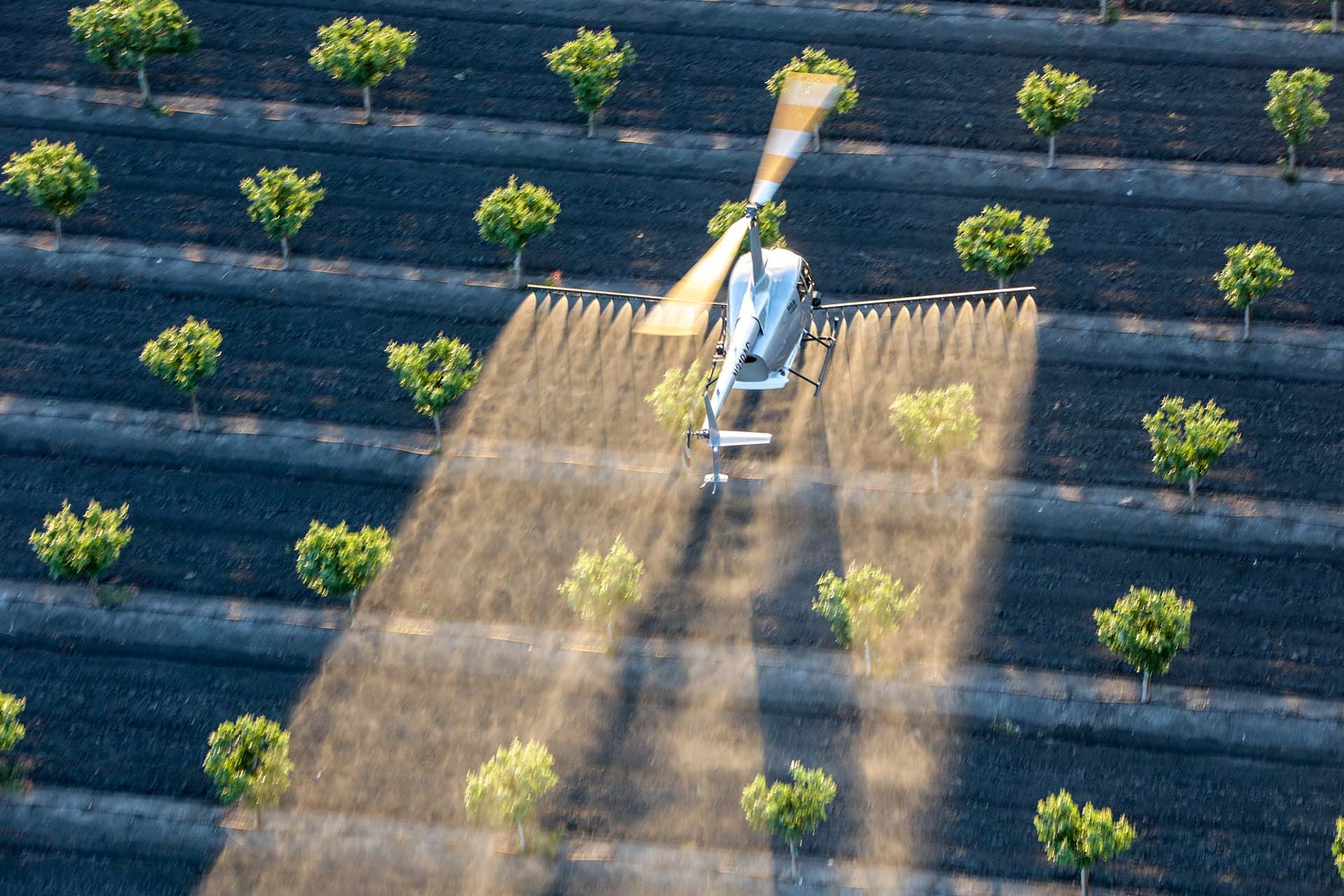On a clear and windless May morning in the heart of California’s Central Valley, Greg Grouleff Jr. follows in the footsteps of two preceding generations of his family, readying his specially modified Grouleff Aviation Robinson R66 for work, in near perfect conditions for aerial application of the various products the agriculture industry calls for.
Important Breadbasket
The Central Valley plays a huge part in agriculture, not just locally, but nationwide. According to the U.S. Geological Survey, more than 250 separate crops are grown in the Central Valley. It supplies eight percent of the nation’s fruits, nuts and other table foods, with an estimated annual value of US$17 billion. The late Al Grouleff flew C-46s ‘over the hump’ during the Second World War and when the war was over, he got into the agriculture aviation industry. He initially landed a job on Stearman crop-dusters with Growers Service but soon moved to a young company called Agair. He finally settled in San Joaquin in 1948 to run Agair’s newly opened branch there and eventually bought the San Joaquin operation in 1976, to found Grouleff Aviation Inc. The company still operates as a family business and Al’s sons Don and Greg joined him in the company, while grandson Greg Jr. works as Grouleff’s only helicopter pilot.
In its heyday, the family business and its predecessor employed dozens of people and operated as many as twenty aircraft. Agair modernized its Stearman fleet in 1973, purchasing two of the very first Air Tractor AT-300s and a pair of Wasp 1340-powered AT-301s just a year later. Under Grouleff ownership the fleet grew to four Air Tractors and two Ayres Bull Thrushes, and the company became an Air Tractor dealership in 1985. From that point on, all new fixed-wing acquisitions were, understandably, Air Tractors, through the AT-802 to the current pair of AT-502Bs. The evolution of agriculture in the California Central Valley from row crops to trees however, lessened the demand for aerial applicators in recent years and the company now operates just two Robinson helicopters – an R44 and the turbine-powered R66 – and the two Air Tractor AT-502Bs.
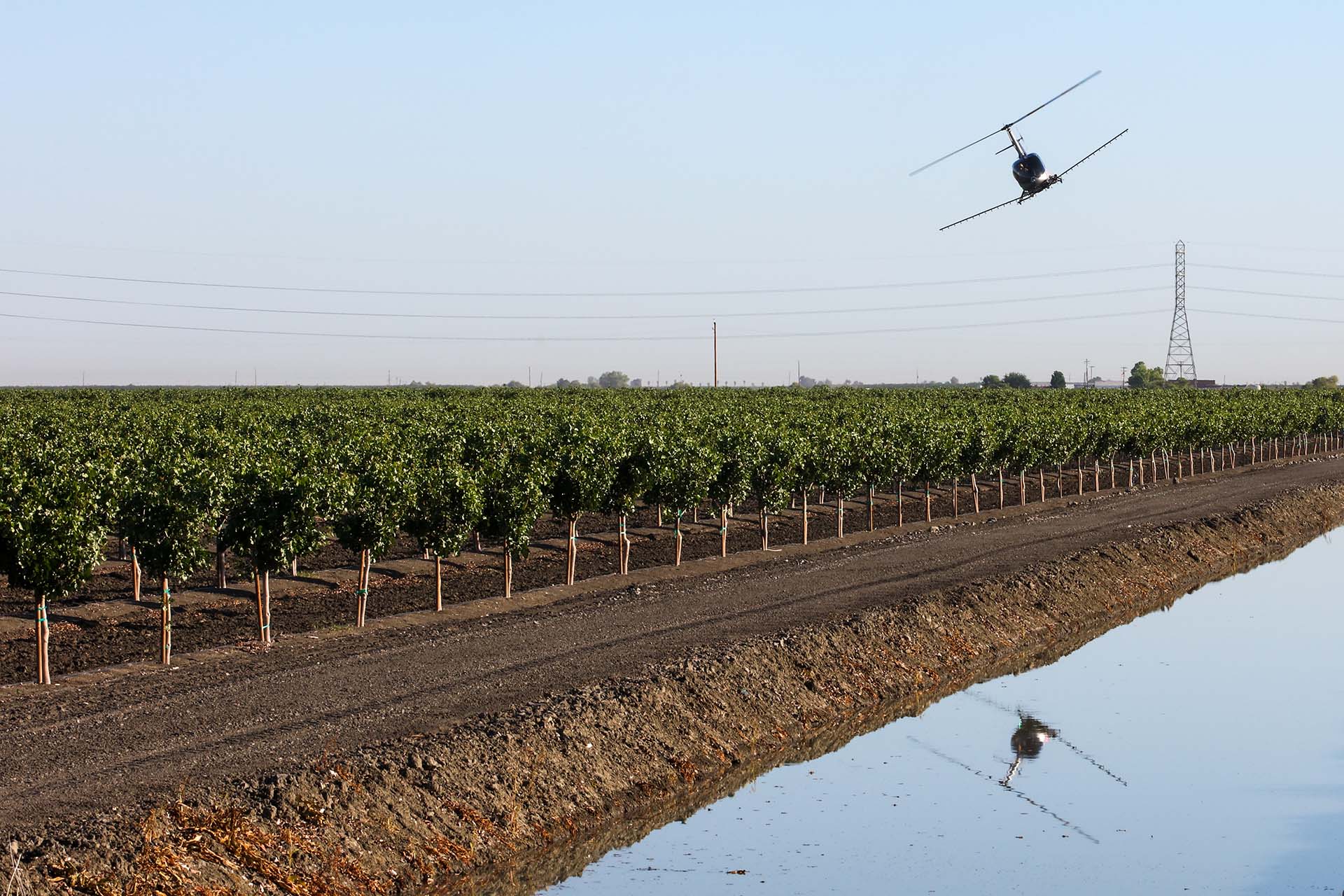
Moving to Robinsons
Despite the downsized workforce and fleet, Grouleff’s pride themselves on being able to handle any agricultural job, big or small. The industry has been slowly moving towards rotorcraft applicators, with helicopters now conducting around sixteen percent of all ag’ application flights, so Greg Jr. handles the vast majority of the work in the R66. He is a third-generation ag’ pilot in his tenth year of spraying crops and has worked in the business since he was a young boy. He estimates that he flies between 700-800 hours in a typical year and has amassed 9,500 total hours: about 8,000 of them spraying crops. He started ag’ flying on the Air Tractors but after a couple of years the company made its first foray into the rotary-wing arena and obtained an R44 Raven II. Greg transitioned into the rotary wing world in 2014. A second Raven II was bought new in 2016 as they were flying many hours on the first R44 and decided that a second machine was needed.
Greg Jr. considers the R66 to be just about perfect for spraying crops. He cites its low cost, especially when it comes to routine scheduled maintenance, as a standout feature compared to other rotorcraft, including the piston-driven R44 he started out in. The R66’s low-inertia rotors make it particularly responsive, allowing the pilot to negotiate tight turns and quick row-by-row turnarounds, not just maximizing the work accomplished each hour and increasing profitability, but also adding a margin of safety. To his knowledge, Grouleff’s is the only West Coast operator using the R66 for this purpose. Typical hazards encountered during spraying include adjacent power lines, structures, trees, public roads and waterways and Greg Jr. considers the reliability of the R66’s turbine engine to be a huge safety plus, especially at night, pointing out that there are not too may suitable places to autorotate at night.
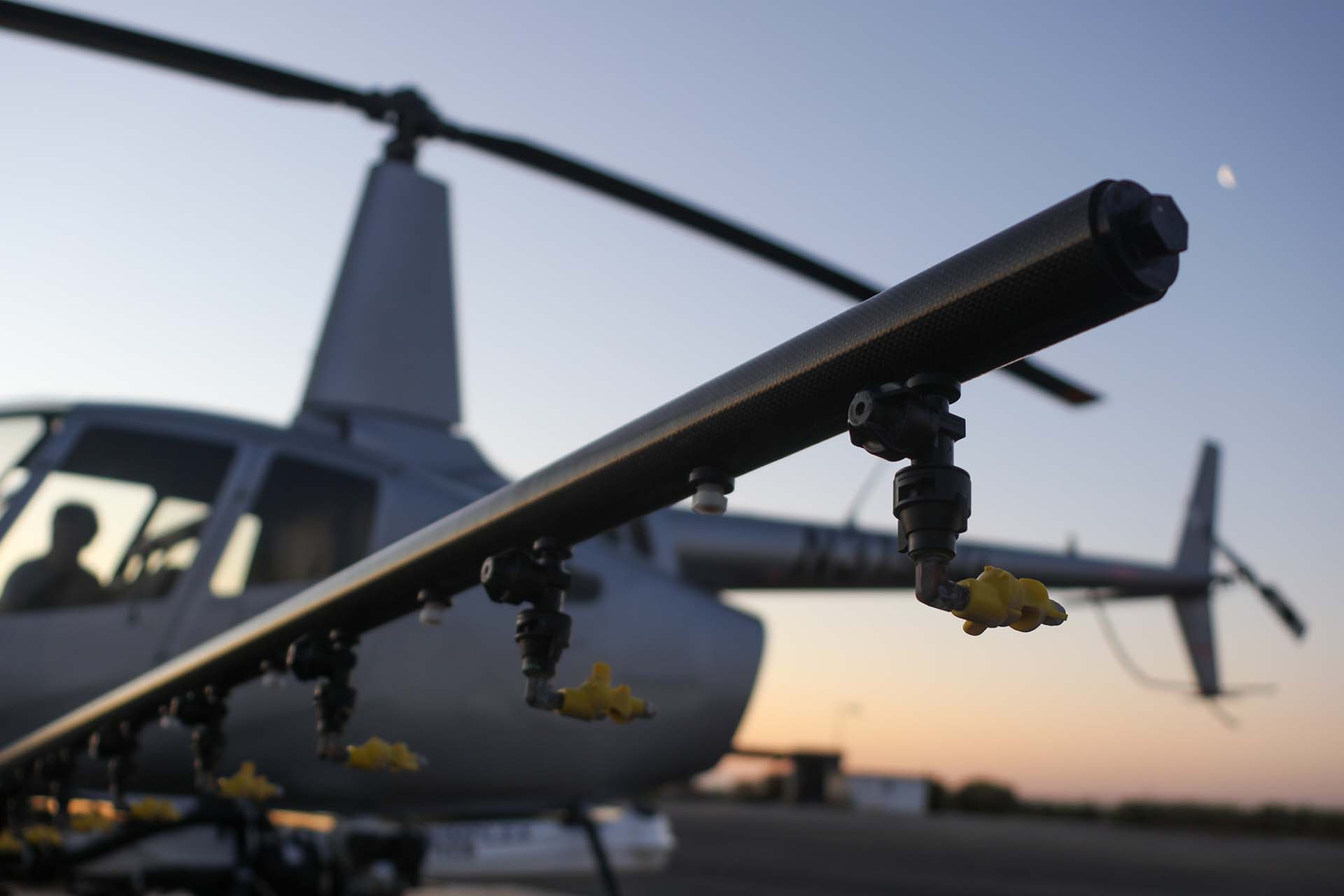
On The Job
On the day of HeliOps’ visit, Greg Jr. was tasked in the R66 for pesticide application on a 200-acre pistachio grove. The job was less than a mile from the airfield, so just a short drive for the ‘nurse’ truck - a mobile landing pad that carries a large supply of pesticide and fuel for the helicopter. The helicopter lands frequently to reload, a quick process that takes only about a minute before the machine is airborne again and Greg Jr. reported that he can fly up to 200 loads in a single day, returning to the nurse truck about every 6 minutes. The relatively high 15gal/acre coverage demanded for this particular job necessitated 23 loads, but coverage can drop to as little as 2-3gal/acre for many row crops, and Greg Jr. commented that the wide variety of crops in the area means that on some days he can fly up to ten jobs, with everyone being on a different type of crop. Grouleff Aviation has two nurse trucks that pre-position at the worksite, carrying 2,500 gallons of water, a 200-gallon mix tank and 200 gallons of fuel. If there are multiple job sites, the nurse trucks leapfrog ahead of the helicopter to maximize efficiency and eliminate downtime while repositioning. The trucks’ elevated landing pads keeps the rotors well off the ground and clear of obstructions. For safety, the deck features a hole large enough for the attendant to attach hoses and resupply the R66’s tanks while keeping his lower extremities below deck. An additional Grouleff modification was moving all of the pumps and pump-engines below the attendant’s deck area and installing electronic valves. This allows the attendant to do everything by push button once the hoses are attached; greatly reducing noise and making for a roomier, more comfortable work area for the attendant between loads.
The aircraft’s Simplex tank system is, according to Greg Jr., highly efficient and reliable. It includes carbon fiber booms, C.P. nozzles and a 130gal (492ltr) product tank. It is standard procedure to clean and flush the system after each use, ensuring no cross-contamination occurs, as pesticides, herbicides or fungicides can be sprayed or spread at different locations as required, depending on the needs of the customer. A large niche of growers requires organic products and Greg Jr. advises that organics now account for about half of the business. In addition to the 130-gallon Simplex tank system, the R66 boasts an Ag Pilot X GPS system, which tracks aircraft movements and overlays them onto a Google Earth image, allowing the pilot to spray with pinpoint accuracy, and pick up at the exact point he left off if he should run out of product in the middle of a row. An Auto Cal Flow Control also adjusts the pump speed based on ground speed to ensure even application of product.
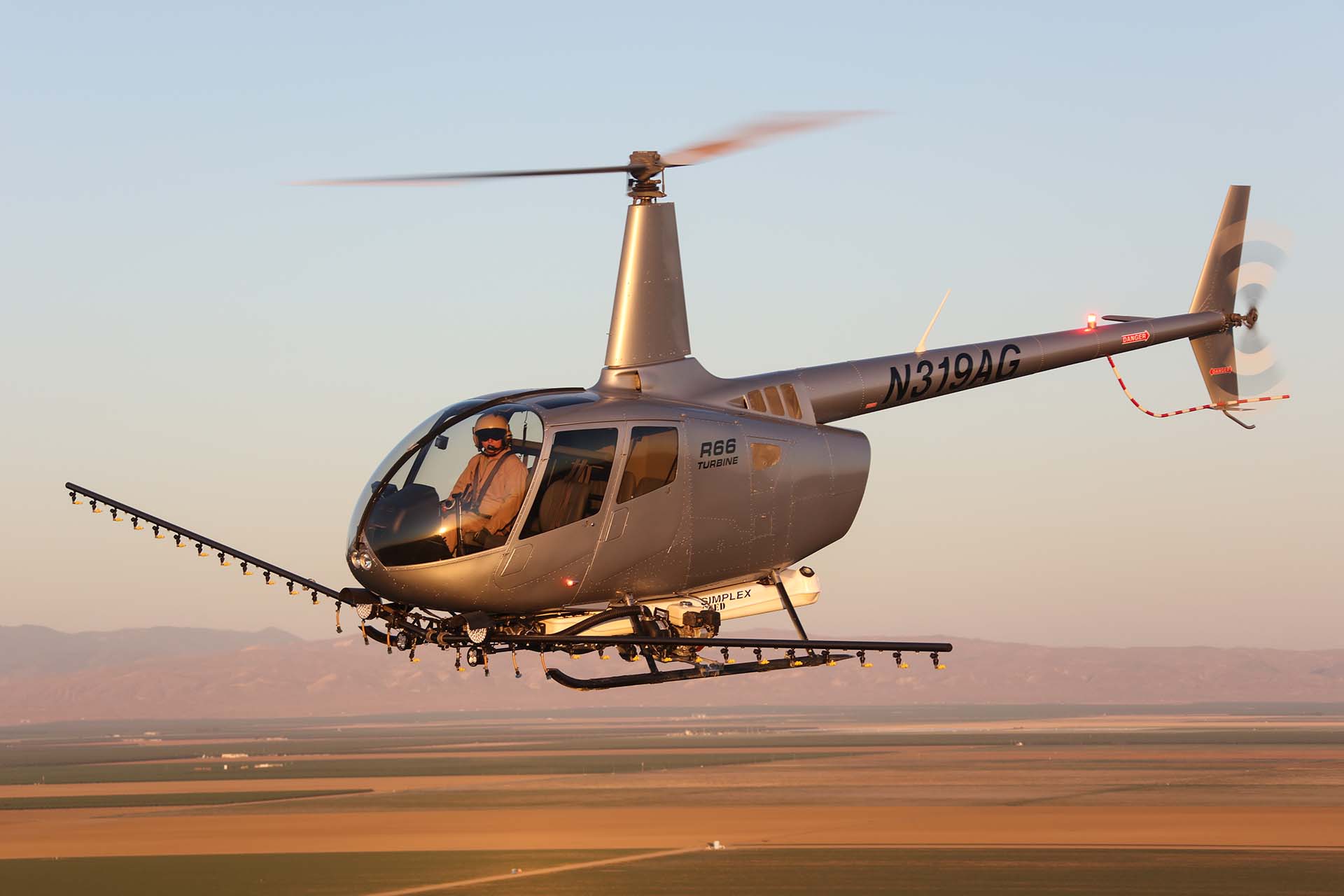
Night Work
In the next couple of months, Grouleff Aviation’s work will shift to primarily nighttime spraying, something pioneered by Al Grouleff and others in the early days of the industry. California, Arizona and Idaho are the only states in the U.S. in which spraying is conducted at night and, although the darkness is a challenge, nighttime weather conditions in this region are much better for spraying, with little wind and a respite from the afternoon heat. Many farmers keep beehives and other managed pollinators on their properties during the summer and as the bees are safely inside their hives at night, it is the perfect time to apply product without directly exposing them.
Additionally, most farm workers work during daylight, so spraying at night eliminates conflicts in work schedules and enhances safety for those on the ground. For nighttime operations, a pair of Aero LED lights have been installed and every effort has been made to install the most energy-efficient LED accessories in order to conserve power and send as much light downrange as possible. All that light comes in handy during nighttime operations. The combination of spotlights and floodlights illuminates hazards as well as warning wildlife of the aircraft’s presence. Greg Jr. explains that power lines typically reflect the light quite well during low-level operations but blend in with trees and terrain when descending for a low-level spray pass. This occurs even during daylight, and it is probably the biggest hazard he deals with.
As for wildlife, Greg Jr. has experienced a few bird strikes in the R66, usually smaller birds such as doves during the day, but one nighttime incident that sticks with him is when a barn owl flew down into his rotor. He was fortunate that the incident did not damage the aircraft, although the owl was obviously not as lucky. To protect against future bird strikes, a new windshield made of special material designed to deflect birds rather than shatter is being ordered from Robinson.
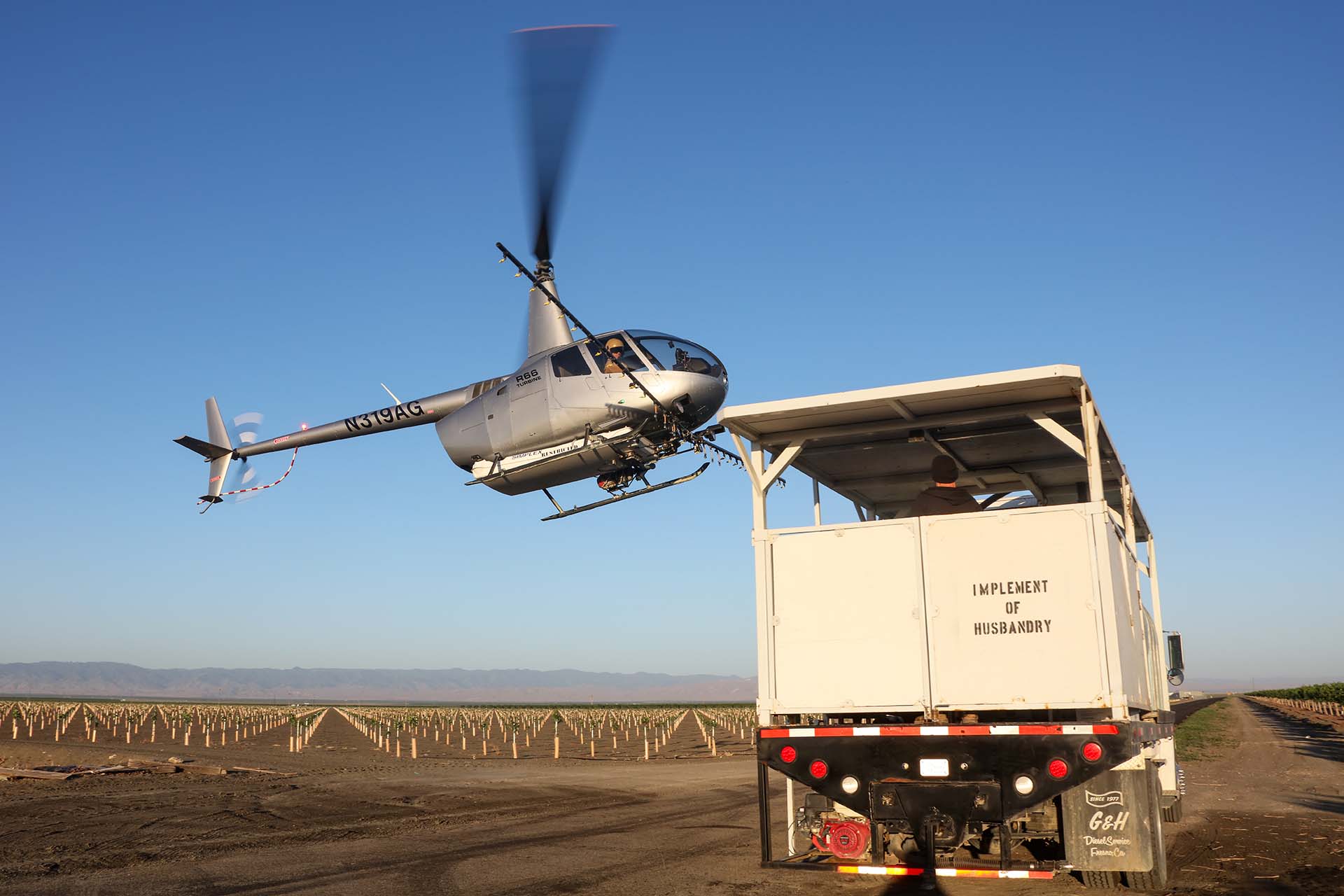
Helicopter Preferred
Many of Grouleff’s customers prefer to have rotorcraft spray their crops as they provide a more even application, especially in tight corners or near wires or buildings that fixed-wing would have trouble negotiating. The R66 – the tail number of which is a derivative of Greg Jr.’s daughter’s birthdate and initials – was selected for this work on the grounds of efficiency and economics. It was purchased brand new in 2019 and outfitted for spraying within a strict budget.
Although he loves flying, Greg Jr. explained that only about ten percent of his job is really in flying the aircraft, while the rest
consists of monitoring the delivery systems and weather conditions, mitigating hazards and completing administrative tasks. The evolution of
Grouleff Aviation stretches from Grandfather Al’s first dusting flights in the little 220hp Stearmans, through the move to larger, more
modern Air Tractors and Ayres fixed wings, to the adoption of helicopters in a smaller and more demanding market. It also encompasses the
growth of the family itself and, although founder Al’ passed away last year at 95 years old, the third generation of Grouleffs is now
working the business, and there is no reason to believe that the company and family will not continue to serve the agricultural community in
the San Joaquin region indefinitely.
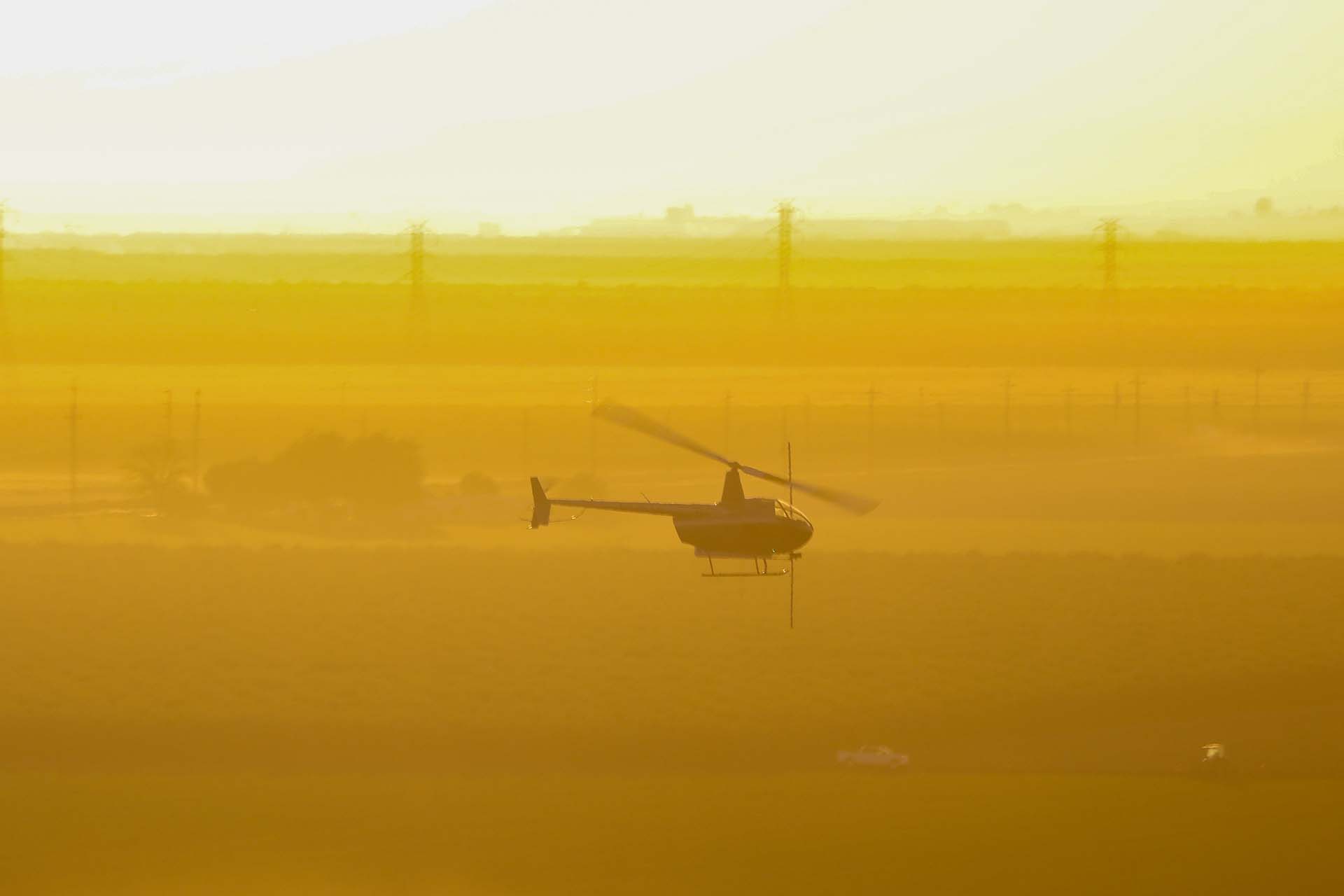
 HOME
HOME


